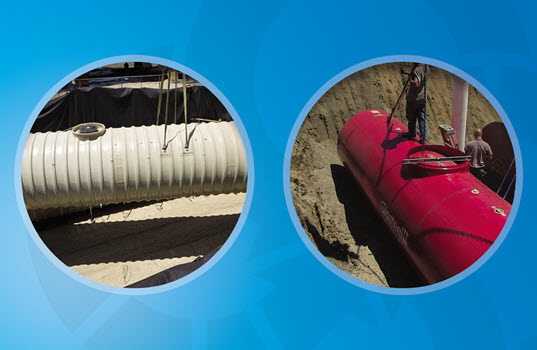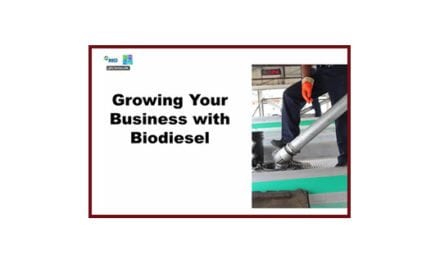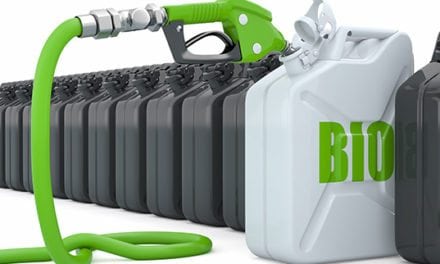“Fueled for Thought,” By Joe O’Brien, Source North America
For seasoned veterans of the fuel industry, 2019 might begin to feel like 1989 all over again.
The reason for the déja vu? Like they did circa 1989, underground storage tank (UST) replacements and closures will likely surge in the next five to 10 years. This is a welcome trend for tank and equipment manufacturers, contractors and distributors. But the underlying reason behind the increase in UST activity will provoke some tough choices for many UST owners. Here’s what UST operators need to know to prepare for those choices.
The UST Life Cycle Begins Anew
The projected surge in UST activity is the byproduct of a similar wave of UST activity that happened a few decades ago. In 1988, the United States Environmental Protection Agency (EPA) issued UST requirements that, among other things, required UST systems installed prior to December 1988 to be upgraded to include spill, overfill and corrosion protection by 1998. Further, the 1988 regulations also required owners and operators to demonstrate financial responsibility (FR) for taking corrective actions – and compensating third parties – for bodily injury and property damage from releases of tanks containing petroleum. The new FR requirement provided extra motivation for ensuring tanks remain in good condition. Today, the USTs installed in the ‘80s and ‘90s are hitting the 30-year mark. This milestone is widely regarded as a UST’s expiration date.
As a result, UST owners and operators are again having to decide what the future holds for their aging USTs. But in some ways, making those decisions is more challenging than it was 20 to 30 years ago due to new trends in UST insurance coverage.
Financial Responsibility vs. Fiscal Attainability
To meet the FR requirement, UST operators need to show proof they have the finances to cover the remediation and compensation costs of a release. The federal UST regulations list several ways for operators to prove financial responsibility including financial test, guarantee, letter of credit, trust fund, surety bond and state fund. But one of the most popular methods is to purchase UST pollution liability insurance. Unfortunately, obtaining coverage for an aging tank is a growing challenge for UST operators.
The reason is pretty simple: as a UST ages, the risk to the insurer increases. Thus many insurance companies are taking more care to develop profitable insurance strategies. A 2017 Risk & Insurance magazine article quotes one environmental practice leader as saying, “Carriers are pushing back on covering tanks of a certain age regardless of whether or not they have passed tests. There is just less and less appetite for aging tanks. Operators are going to have to start replacing them.”
Some insurance carriers have stopped offering UST policies due to growing losses. In a 2015 white paper from independent insurance broker Lockton, the report’s author cites that the frequency and severity of UST claims are on the rise. He attributes the increase to the improved sensitivity of testing equipment and elevated standards for cleanups. Further, the composition of fuels has evolved. UST systems not designed for the new fuel formulations are more susceptible to degradation.
UST operators with aging tanks will face higher insurance rates. According to the Lockton white paper, owners of newer USTs will still be offered competitive renewals with affordable premiums and low deductibles. But for operators with older UST systems, “deductibles can quickly grow more than $50,000 per claim and, in extreme cases, closer to $1 million per claim, requiring insureds to fully collateralize the deductible with an approved letter of credit.”
Decisions, Decisions
Most manufacturer warranties cover USTs for 30 years. And many people within the petroleum industry believe properly maintained USTs can provide dependable service for 30 years or more. That notwithstanding, those views are likely now out of sync with the insurance industry. According to the Association of State and Territorial Solid Waste Management Officials’ (ASTSWMO) Guide to Tank Insurance, “Some insurers have made a blanket decision not to sell insurance for tanks over 20 years of age, and even more importantly, not to renew any policies with tanks in excess of 26 years of age. Other insurers may not expressly prohibit placing or renewing coverage on these older tanks, but will price the insurance so as not to be competitive.”
Further complicating the situation: state funding for FR is beginning to dissolve. According to the EPA, five states – Arizona, Connecticut, Florida, Texas and Wisconsin – no longer provide FR funds to UST owners (though they will pay for ongoing cleanups where they assumed financial responsibility in the past). Nine other states – Alaska, Delaware, Hawaii, Iowa, Maryland, New Jersey, Oregon, Washington and West Virginia – and the District of Columbia are not providing funding at all.
With key partners relinquishing financial support for UST management, a fuel site operator faces some daunting choices: Pay higher insurance rates? Pursue an alternative FR mechanism? Replace the aging tanks? Close? Sell?
In a future of perceived higher interest rates and cost of capital, the decision to replace a tank will not be easy. According to the Risk & Insurance article, many UST operators are purchasing tank-only coverage or adding tank endorsements to their Pollution Legal Liability coverage. (In the insurance industry, endorsements are amendments that change the terms of the original policy). But UST operators should approach these endorsements with caution. The Lockton white paper reports that some insurance companies are placing tank removal exclusion endorsements on policies, thereby handcuffing the policyholder to their aging tanks.
It is advisable for all UST operators to familiarize themselves with their UST’s insurance coverage. But it is imperative for operators with tanks 20 years and older to understand the limitations of their policies. This is especially true for independent C-store operators who may not have access to corporate legal resources. Understandably, interpreting the language, terms and conditions included in a UST policy can be can a challenge for someone who isn’t an insurance expert. The ASTSWMO’s Guide to Tank Insurance helps UST operators overcome this. The guide explains insurance terms, coverage periods, exclusions and much more. It also recommends questions to ask when purchasing tank insurance. Download the guide for free at www.astswmo.org/guide-to-tank-insurance/.
 Joe O’Brien is Vice President of Marketing at Source™ North America Corporation. He has more than 20 years experience in the petroleum equipment fuel industry. Contact him at [email protected] or visit sourcena.com to learn more.
Joe O’Brien is Vice President of Marketing at Source™ North America Corporation. He has more than 20 years experience in the petroleum equipment fuel industry. Contact him at [email protected] or visit sourcena.com to learn more.









